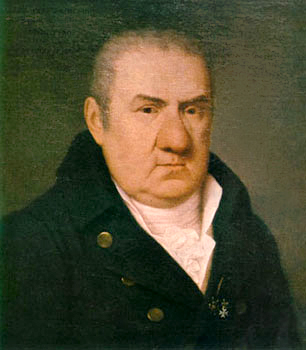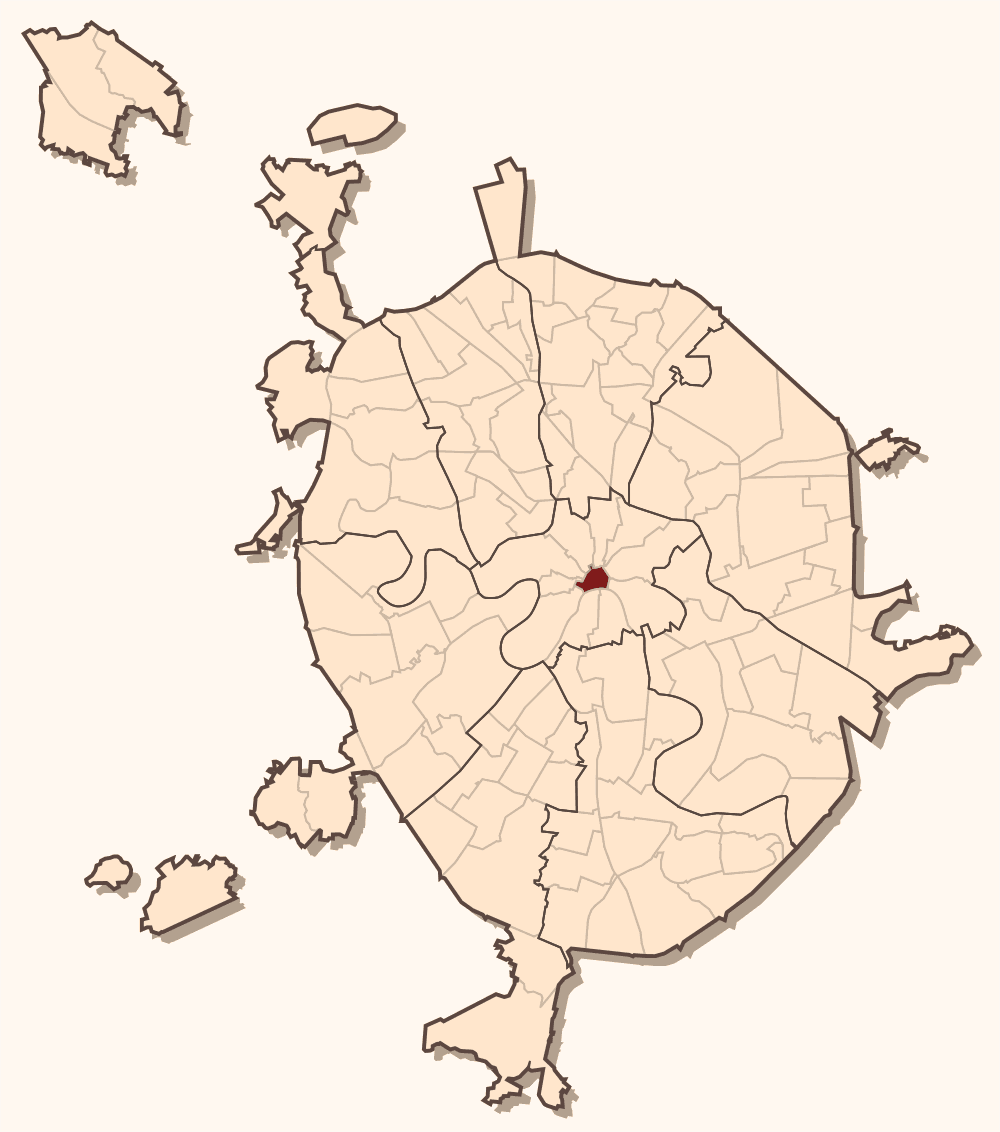|
Gostiny Dvor
Gostinyi dvor ( rus, гостиный двор, p=ɡɐˈsʲtʲinɨj ˈdvor) is a historic Russian term for an indoor market or shopping centre. It is translated from Russian either as "guest court" or "merchant yard", although both translations are inadequate. These structures originated as collections of small shops where merchants from other cities could, at designated times, come to sell their wares. Such structures, constructed in every large Russian town during the first decades of the 19th century, are fine examples of Neoclassical architecture. Notable examples Saint Petersburg The name is commonly applied to the vast department store in St Petersburg. This ''gostiny dvor'' is not only the city's oldest and largest shopping centre, but also one of the first shopping arcades in the world. Sprawling at the intersection of Nevsky Prospekt and Sadovaya Street for over one kilometer and embracing the area of , the indoor complex of more than 100 shops took 28 years ... [...More Info...] [...Related Items...] OR: [Wikipedia] [Google] [Baidu] |
Sadovaya Street
Sadovaya Street or Garden Street is a major thoroughfare in Saint Petersburg, Russia, passing through the historic city center. From east to west, it begins near the Field of Mars, crosses the Moika River at the First Sadovy Bridge, then passes over Spassky Island, the Kryukov Canal (at the Staro-Nikolsky Bridge), and Pokrovsky Island, before finally ending at the junction of the Griboyedov Canal and the Fontanka River. The section from the Moika to Gorokhovaya Street belongs to the Central District of the city, and the rest, to the Admiralteysky District. The street is 4376 m in length and about 8 m in width, and the distance between the buildings can be up to 18 m. The street has great cultural and historical significance, passing by many historical and architectural monuments from the 18th, 19th, and 20th centuries, including the Mikhailovsky, Vorontsov, and Moika (Yusupov) palaces. The street serves many important transportation functions, linking the central areas ... [...More Info...] [...Related Items...] OR: [Wikipedia] [Google] [Baidu] |
Giacomo Quarenghi
Giacomo Quarenghi (; rus, Джа́комо Кваре́нги, Džákomo Kvaréngi, ˈdʐakəmə kvɐˈrʲenʲɡʲɪ; 20 or 21 September 1744) was an Italian architect who was the foremost and most prolific practitioner of neoclassical architecture in Imperial Russia, particularly in Saint Petersburg. He brought into vogue an original monumental style, of Palladian inspiration, which was a reference for many architects who worked in Russia. He has been described as "the last of the great architects of Italy". Career in Italy Born in Rota d'Imagna near Bergamo to an Italian noble family, Quarenghi was destined by his parents for a career in law or the church but initially was allowed to study painting in the Bergamo studio of G. Reggi, himself a student of Tiepolo. Young Quarenghi was well educated and widely read. Traveling through Italy he visited Vicenza, Verona, Mantua and Venice, the places where he made the longest stays. He made drawings of the Greek temples at Paestum ( ... [...More Info...] [...Related Items...] OR: [Wikipedia] [Google] [Baidu] |
Kitai-gorod
Kitay-gorod ( rus, Китай-город, p=kʲɪˈtaj ˈɡorət), also referred to as the Great Possad () in the 16th and 17th centuries, is a cultural and historical area within the central part of Moscow in Russia, defined by the remnants of now almost entirely razed fortifications, narrow streets and very densely built cityscape. It is separated from the Kremlin by Red Square. Kitay-gorod does not constitute a district (''raion''), as there are no resident voters, thus, municipal elections are not possible. Rather, the territory has been part of Tverskoy District, and the Central Administrative Okrug authorities have managed the area directly since 2003. Etymology Beside Kitay-gorod in Moscovia (region), Moscovia in ancient Russia, Kitay was also a name for a sea. A sea called Kitay exists in Odessa in Ukraine. Older sources said that people with darker skin than other ethnic groups of Russia sold goods and traded with other peoples in the area of the Kitay sea. ''Kita ... [...More Info...] [...Related Items...] OR: [Wikipedia] [Google] [Baidu] |
Moscow
Moscow ( , US chiefly ; rus, links=no, Москва, r=Moskva, p=mɐskˈva, a=Москва.ogg) is the capital and largest city of Russia. The city stands on the Moskva River in Central Russia, with a population estimated at 13.0 million residents within the city limits, over 17 million residents in the urban area, and over 21.5 million residents in the metropolitan area. The city covers an area of , while the urban area covers , and the metropolitan area covers over . Moscow is among the world's largest cities; being the most populous city entirely in Europe, the largest urban and metropolitan area in Europe, and the largest city by land area on the European continent. First documented in 1147, Moscow grew to become a prosperous and powerful city that served as the capital of the Grand Duchy that bears its name. When the Grand Duchy of Moscow evolved into the Tsardom of Russia, Moscow remained the political and economic center for most of the Tsardom's history. When th ... [...More Info...] [...Related Items...] OR: [Wikipedia] [Google] [Baidu] |
Moscow Gostiny Dvor
The Old Merchant Court (russian: Старый гостиный двор, ) in Moscow occupies a substantial portion of Kitai-gorod, as the old merchant district is known. It located near the famous Red Square, a few hundred metres away. Formerly accommodating both shops and warehouses, it was constructed of brick in the 1590s and underwent significant modifications from 1638–1641. As the Russian capital expanded and the old structure became overcrowded, a new indoor market was completed nearby in 1665. Giacomo Quarenghi, the favored architect of Catherine the Great, in 1789 replaced those medieval buildings with a new shopping mall designed in a sober Neoclassical style with innumerable Corinthian columns and arcades. Several local Moscow architects including S. Karin, I. Egotov and P. Selihov supervised the actual construction. The first phase was delayed because of the death of Catherine the Great and was not completed until 1805. Osip Bove made some modifications to adapt to ... [...More Info...] [...Related Items...] OR: [Wikipedia] [Google] [Baidu] |
Nikolsky Market
Nikolsky Market or Nikolskie ryady (russian: Никольские ряды, rows of Nicholas) is a commercial building at 62. Sadovaya Street in Saint Petersburg, built in 1789. The redevelopment of this building has caused some controversy. History The Nikolskie ryady indoor market was built in 1789 at a similar time to the Izmailovsky Gostiny Dvor. Present In September 2006 a construction company said that "Nikolskie ryady" required complete reconstruction which would take between 30 and 36 months. This is because the building required the complete replacement of its systems for utilities like electricity, heating and water. The work proposed involved keeping the historic facade and dimensions.:director of construction company George Grehnev Two years later however the buildings tenants noted that 70% of the building could be classified as in an emergency condition. A project was proposed that actually involved demolishing about 50% of the building although it would still ... [...More Info...] [...Related Items...] OR: [Wikipedia] [Google] [Baidu] |
Apraksin Dvor
Apraksin Yard (also Apraxin Dvor; russian: Апраксин Двор) is a market and retail block in Saint Petersburg, Russia, currently under a massive long-term renovation project. The buildings of Apraksin Dvor nestle between Sadovaya Street and the Fontanka River, just southwest of the Alexandrinsky Theatre. The first market on the spot originated in the mid-18th century, deriving its name from Count Apraksin who owned the plot. After a merchant named Shchukin purchased a portion of it, that part became known as Shchukin Dvor. The market buildings were wooden and burnt to the ground in 1782. In 1863, a new department store was opened on the spot. It was built to a design by Geronimo Corsini. Over the next decade, more than 45 shops were constructed in the vicinity. In 1913, Apraksin Dvor contained more than 500 shops. A further 270 small wholesale enterprises were located on the grounds of Shchukin Dvor. After the Russian Revolution of 1917, most buildings of Apraksin Dvo ... [...More Info...] [...Related Items...] OR: [Wikipedia] [Google] [Baidu] |
Saint Petersburg Metro
The Saint Petersburg Metro (russian: links=no, Петербургский метрополитен, Peterburgskiy metropoliten) is a rapid transit system in Saint Petersburg, Russia. Construction began in early 1941, but was put on hold due to World War II and the subsequent Siege of Leningrad, during which the constructed stations were used as bomb shelters. It was finally opened on 15 November 1955. Formerly known as the ''Order of Lenin Leningrad Metro named after V. I. Lenin'' (), the system exhibits many typical Soviet designs and features exquisite decorations and artwork making it one of the most attractive and elegant metros in the world. Due to the city's unique geology, the Saint Petersburg Metro is also one of the deepest metro systems in the world and the deepest by the average depth of all the stations. The system's deepest station, Admiralteyskaya, is below ground. The network consists of 5 lines with a total length of . It has 72 stations including 7 transfer p ... [...More Info...] [...Related Items...] OR: [Wikipedia] [Google] [Baidu] |
Eastern Europe
Eastern Europe is a subregion of the Europe, European continent. As a largely ambiguous term, it has a wide range of geopolitical, geographical, ethnic, cultural, and socio-economic connotations. The vast majority of the region is covered by Russia, which spans roughly 40% of the continent's landmass while accounting for approximately 15% of its total population."The Balkans" , ''Global Perspectives: A Remote Sensing and World Issues Site''. Wheeling Jesuit University/Center for Educational Technologies, 1999–2002. It represents a significant part of Culture of Europe, European culture; the main socio-cultural characteristics of Eastern Europe have historically been defined by the traditions of Slavs and Greeks, as well as by the influence of Eastern Christianity as it developed through t ... [...More Info...] [...Related Items...] OR: [Wikipedia] [Google] [Baidu] |
World War II
World War II or the Second World War, often abbreviated as WWII or WW2, was a world war that lasted from 1939 to 1945. It involved the vast majority of the world's countries—including all of the great powers—forming two opposing military alliances: the Allies and the Axis powers. World War II was a total war that directly involved more than 100 million personnel from more than 30 countries. The major participants in the war threw their entire economic, industrial, and scientific capabilities behind the war effort, blurring the distinction between civilian and military resources. Aircraft played a major role in the conflict, enabling the strategic bombing of population centres and deploying the only two nuclear weapons ever used in war. World War II was by far the deadliest conflict in human history; it resulted in 70 to 85 million fatalities, mostly among civilians. Tens of millions died due to genocides (including the Holocaust), starvation, ma ... [...More Info...] [...Related Items...] OR: [Wikipedia] [Google] [Baidu] |
New Passage, St Petersburg
New is an adjective referring to something recently made, discovered, or created. New or NEW may refer to: Music * New, singer of K-pop group The Boyz Albums and EPs * ''New'' (album), by Paul McCartney, 2013 * ''New'' (EP), by Regurgitator, 1995 Songs * "New" (Daya song), 2017 * "New" (Paul McCartney song), 2013 * "New" (No Doubt song), 1999 *"new", by Loona from '' Yves'', 2017 *"The New", by Interpol from ''Turn On the Bright Lights'', 2002 Acronyms * Net economic welfare, a proposed macroeconomic indicator * Net explosive weight, also known as net explosive quantity * Network of enlightened Women, a conservative university women's organization * Next Entertainment World, a South Korean film distribution company Identification codes * Nepal Bhasa language ISO 639 language code * New Century Financial Corporation (NYSE stock abbreviation) * Northeast Wrestling, a professional wrestling promotion in the northeastern United States Transport * New Orleans Lakefront ... [...More Info...] [...Related Items...] OR: [Wikipedia] [Google] [Baidu] |




.jpg)

